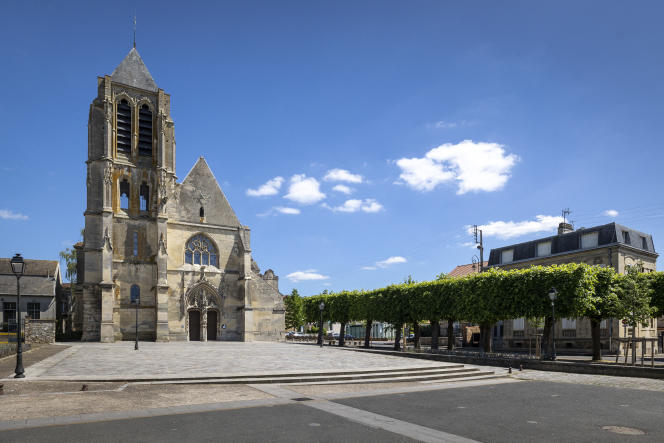In front of the old 13th century churche century of Bessancourt (Val-d’Oise), diggers and workers are busy in the heat of July. The construction site makes the central square of this city of 8,000 inhabitants inaccessible. Difficult to imagine, as the landscape is upset, that all this agitation has for main objective to bring nature in the center borough.
Jean-Christophe Poulet, mayor of the town (various left, ex-Les Verts), speaks with pride of his project to renature the town center square, occupied since the 1980s by a car park. The city councilor points to what will be, when the work is finished, a pond that will welcome frogs and ducks, then heads towards the locations of the fifty or so trees that will make up the site, which will be surrounded by tall grass. The project must in particular make it possible to create ecological corridors linking the various green spaces of the city, starting with the park of the castle in the city center. “Some people think that there is no point in creating new natural spaces when we already have parks. I don’t think you have to travel to have nature, it has to be where you live,” explains the chosen one.
The return of nature to the city is increasingly seen as an effective way to resist heat islands while promoting biodiversity. The objective of “zero net artificialisation” by 2050, adopted on July 13 by the Parliament with the aim of halting the progress of the concreting of land, could also encourage recourse to renaturation projects.
Disagreement on the precise definition of renaturation
Renaturation aims to restore ecosystems destroyed by human infrastructure and activities and can take various forms in the city, serving multiple objectives. Projects are carried out to purify urban pollution thanks to vegetation, or to manage floods, by reopening tributaries that were once prisoners of concrete. Such demanding jobs require a return to the open ground. In addition to desimpermeabilization, it is important to maintain a vertical continuity of the earth, so that the trees communicate with the water tables, and horizontal, so that the soil species can move.
The soil must also have certain physico-chemical and biological qualities, such as the concentration of bacteria and fungi. All these criteria are “very complicated to obtain in dense areas”, notes Marc Barra, ecologist at the Paris Region Institute (IPR). Indeed, it is difficult to find open ground in highly urbanized areas, whose basements are occupied by multiple cables or underground car parks, or even metros.
You have 53.39% of this article left to read. The following is for subscribers only.
